During World War II, so many things were meant to be temporary. Americans made accommodations in all areas of their lives to help the United States and its Allies win. The government drafted its citizens. Rations limited food, tires, and gasoline. Women started new jobs in war industries. Families grew victory gardens in their backyards. Americans believed these sacrifices would prove to be worthwhile when the war ended. Once the United States secured victory, all these temporary changes would disappear.
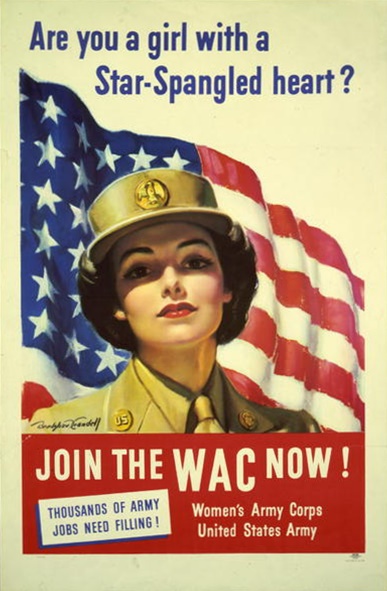
Between 1942 and 1945, nearly 350,000 American women volunteered for military service. Women had served in uniform briefly in World War I, but World War II was the first time that the military branches recruited women in large numbers. From 1942 to 1945, women served in the Women’s Army Corps (WAC), the Navy’s Women Accepted for Volunteer Emergency Service (WAVES) program, the Women’s Marine Corps Reserve, and the Coast Guard (SPAR). Still more women volunteered in the Army Nurse Corps and Navy Nurse Corps, well-established professional divisions that only admitted women. Women pilots applied for the Women Airforce Service Pilots (WASP) program. The WASPs, although they were classified as civilians, ferried airplanes for the military until the program ended in 1944.
According to military leaders and members of Congress, wartime necessity meant there were jobs women could do so that men could fill other, more important jobs. The consensus was that women were not supposed to be in the military; women’s wartime military service was simply an emergency measure. Congress designated that the WAC, for example, would last only for “the duration of the war plus six months.”
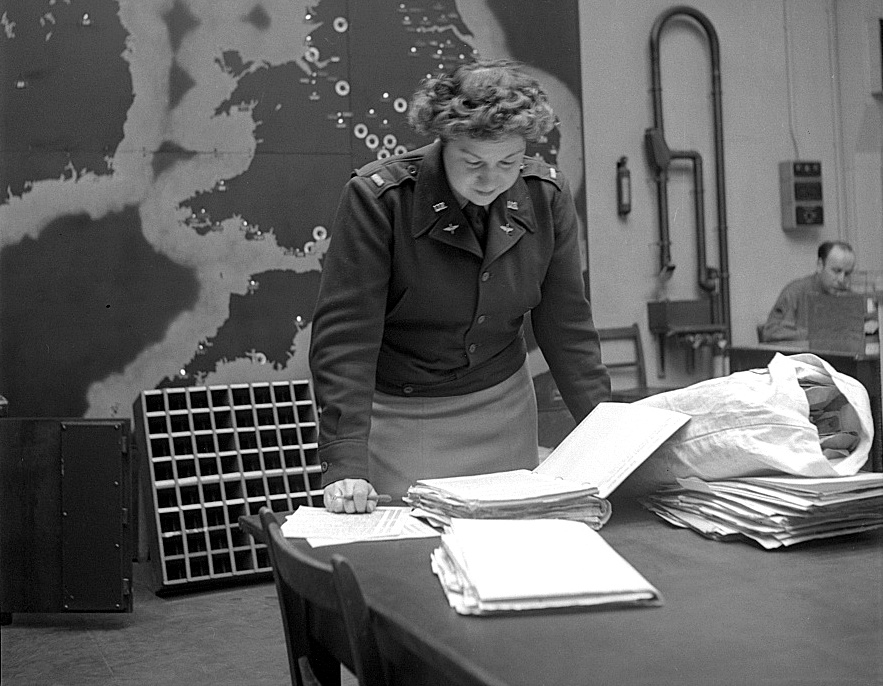
Mary Hallaren, who joined the military in 1942, had other ideas. She was one of the earliest recruits to the Women’s Army Auxiliary Corps (WAAC), which was the early version of the Women’s Army Corps. Like the majority of WAACs, she remained in service when Congress gave the women full military status in 1943, creating the Women’s Army Corps. Hallaren supervised all WACs serving in Europe during the war. After the fighting ended, she was promoted to colonel and became the director of the Women’s Army Corps. She quickly gained the nickname “the little colonel,” because she stood only five feet tall. Colonel Hallaren may have been short, but she had a long-reaching vision. At a time when everyone else expected servicewomen to go back home, Hallaren was fighting for something different — the recognition that the United States military could still use women in peacetime.
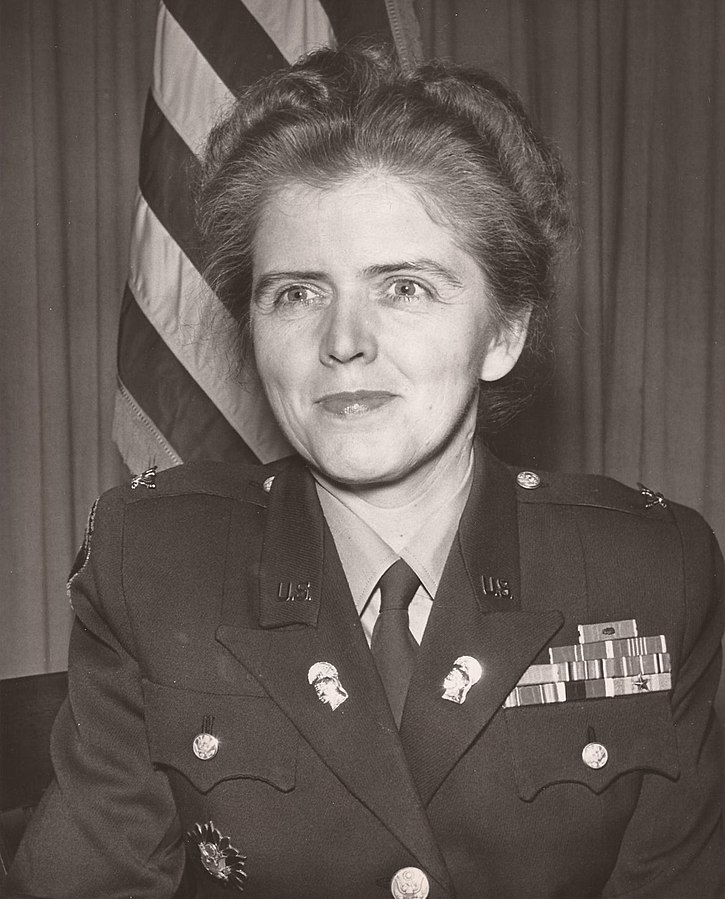
A lot of work had gone into creating spaces for women in the military during World War II. New training facilities and programs had to be developed. Since women were not allowed to fight on the front lines, they would need a different kind of preparation to help Uncle Sam. Uniforms had to be designed. Recruiting efforts were carefully planned. By the end of the war, Hallaren had seen all the hard work and missteps it had taken to marshal American womanpower as a wartime resource.
And after the war, military personnel were still needed to create the new peacetime world. Not all soldiers would return stateside; many would be sent to new stations overseas.
Colonel Hallaren believed it made no sense to make women leave the military when they were only just beginning to show what they could accomplish when the nation called on them. In light of the continuing need for a U.S. presence around the world, it would be foolhardy for the American government to completely eliminate this important resource.
She took her fight to Congress, going to battle in the name of thousands of servicewomen who also believed they had more to give their country. “We must put it very simply,” Hallaren told members of Congress, “we can’t afford to turn back a page in history — we mustn’t make the same mistake twice.”
During late 1947 and early 1948, members of Congress listened carefully to military leaders who came to support the Women’s Armed Services Integration Act, including Hallaren, General Eisenhower, and the first Secretary of Defense, James Forrestal. They fielded questions about women’s physical abilities, what to do about pregnancy, how parents would feel about their daughters in uniform, and worries that military service might make women unfeminine. One senator asked if menopause would be a reason for discharging women. He stopped his line of questioning after being read a statement from the Navy’s surgeon general. He pointed out that men also went through a similar change in life as they aged. Another senator, noting there were plans to retire women officers at age 50 (under certain conditions), asked “How are you going to get a woman to admit she is 50 years of age?”
Giving women a permanent place in national defense was just smart strategy, the supporters argued. “When the house is on fire,” Hallaren pointed out, “we don’t talk about a woman’s place in the home. And we don’t send her a gilt-edged invitation to help put the fire out.”
Even when the first version of the Women’s Armed Services Integration Act was put on hold in the summer of 1947, she offered encouragement to those serving in the Women’s Army Corps worldwide. Writing in the Women’s Army Corps newsletter, she reminded the women that they were the pioneers. This was not the first time they had faced challenges. “You’ve been over the hurdles once….You sold the country on the value of women in a wartime Army. You sold the Army on the need of women in the peacetime establishment.”
After winding its way through House and Senate approvals, President Truman finally signed the Women’s Armed Service Integration Act into law On June 12, 1948. Since that day, women have had a place in all military branches. The act guaranteed them equal pay, something unheard of for most working women in the United States at that time.
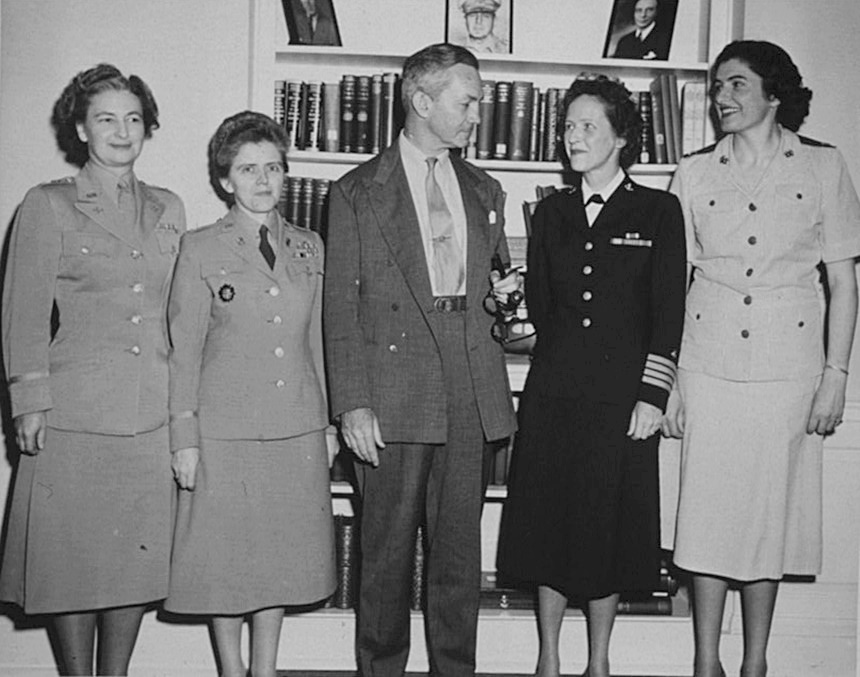
While the new law offered many opportunities, it placed restrictions on servicewomen as well. Women would not serve in combat. Mothers would not be eligible to serve in any military branch. Women in the Navy could not be stationed at sea. Not all jobs would be open to women; instead, military leaders would focus on figuring out what types of jobs women might do as well or better than men. There would be no women admirals or generals — military and government leaders could not imagine a time when women would need to rise that high in leadership.
It would take decades to prove that these restrictions were unnecessary. In the 1970s, women with children could serve. The first female generals and admirals received their promotions. The military academies began to admit women, opening more opportunities for women in leadership. And, in the last decade, the final gender-based barriers — combat restrictions — were removed.

Today, American women serve in all areas of the armed forces. They continue to break barriers and support their country in every way possible. When the house is on fire, they are often the first to grab a hose to put it out.
Become a Saturday Evening Post member and enjoy unlimited access. Subscribe now
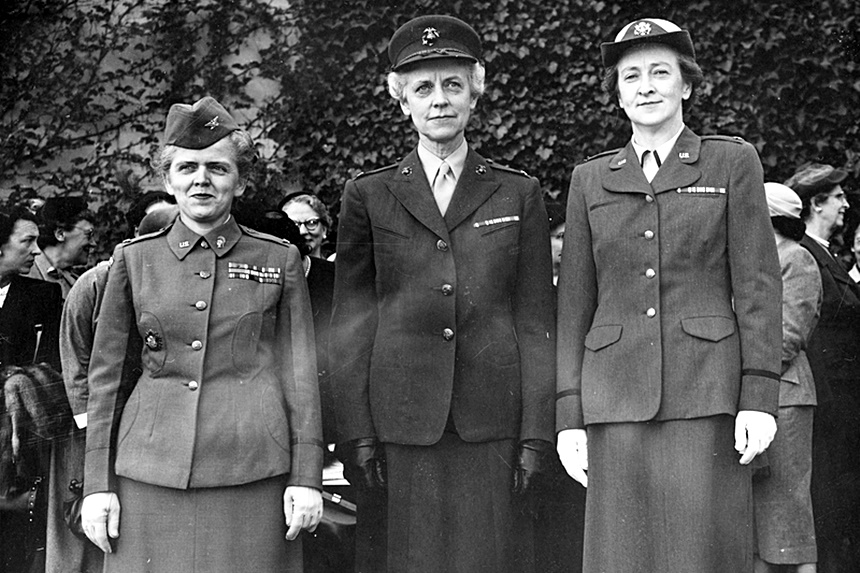



Comments
Wonderful snapshot of how the USA is sometimes forced to wake up and smell the coffee.
When the US Military is used to prevent wars it’s much more difficult to prove how worthwhile the huge expense is and why it needs to be spread so far and wide. When politicians get involved in either fighting wars or preventing them, it always turns out badly.
This is a fascinating look at women in the military, and how far they’ve come. Though limited by today’s standards in World War II, those times were probably still more like the present day for women (opportunity wise) than during World War I, about 25 years earlier.
World War II was the last war the United States won, and had justification being in. I support our troops 100%, but hate the fact men and women are being put in harms way in countries our government/military has no business being in, in the first place. All for the billions in profit for the military industrial complex. Northrup-Grumman, Lockheed-Martin, Raytheon, Boeing, General Electric to name just a few.
All of their weapons abandoned in the likes of Afghanistan, in perfect working condition, used by their military in attacking other other countries the military industrial complex knows full well they’ll do to ‘justify’ the U.S. invading that country, for killing. Full-on warmongers from the President to Senator Lindsey Graham turning our U.S. into a nation starting wars anywhere and everywhere we can; never NOT being in a war or the more ambiguous ‘conflict’.
I didn’t mean to get off topic Ms. Roth, but we have a situation today that affects women, men, children, animals, the environment here and around the world. Our “leaders” seem intent on destroying our nation by diverting endless billions everywhere but here. We have two broken political parties that have allowed our cities to become cesspools of horror, immigrants/migrants (some very dangerous) being given everything, with our tax dollars. Always our money. Our government also lives by the motto, “Love the soldier, hate the veteran.” Ain’t that the truth.